
The 1989 Loma Prieta earthquake occurred on California's Central Coast on October 17 at local time. The shock was centered in The Forest of Nisene Marks State Park in Santa Cruz County, approximately 10 mi (16 km) northeast of Santa Cruz on a section of the San Andreas Fault System and was named for the nearby Loma Prieta Peak in the Santa Cruz Mountains. With an magnitude of 6.9 and a maximum Modified Mercalli intensity of IX (Violent), the shock was responsible for 63 deaths and 3,757 injuries. The Loma Prieta segment of the San Andreas Fault System had been relatively inactive since the 1906 San Francisco earthquake until two moderate foreshocks occurred in June 1988 and again in August 1989.

A fireboat or fire-float is a specialized watercraft with pumps and nozzles designed for fighting shoreline and shipboard fires. The first fireboats, dating to the late 18th century, were tugboats, retrofitted with firefighting equipment. Older designs derived from tugboats and modern fireboats more closely resembling seafaring ships can both be found in service today. Some departments would give their multi-purpose craft the title of "fireboat" also.

This article continues the history of California in the years 1900 and later. For events through 1899, see History of California before 1900.

The San Francisco Mint is a branch of the United States Mint. Opened in 1854 to serve the gold mines of the California Gold Rush, in twenty years its operations exceeded the capacity of the first building. It moved into a new one in 1874, now known as the Old San Francisco Mint. In 1937 Mint operations moved into a third building, the current one, completed that year.

The Raker Act was an act of the United States Congress that permitted building of the O'Shaughnessy Dam and flooding of Hetch Hetchy Valley in Yosemite National Park, California. It is named for John E. Raker, its chief sponsor. The Act, passed by Congress in 1913 by the Wilson Administration, specified that because the source of the water and power was on public land, no private profit could be derived from the development. The plan for damming the valley was fought for years by John Muir. Construction of the dam was finished in 1923.
Dennis Smith was an American firefighter and author. He was the author of 16 books, most notable of which is the memoir Report from Engine Co. 82, a chronicle of his career as a firefighter with the New York City Fire Department in a South Bronx firehouse from the late 1960s and into the 1970s. Smith served for 18 years as a New York City firefighter, from 1963 to 1981, and is the most well-known advocate for firefighters in the United States. After 9/11, he chronicled the 57 days he spent in rescue and recovery operations at the World Trade Center collapse in a bestselling book, Report from Ground Zero.
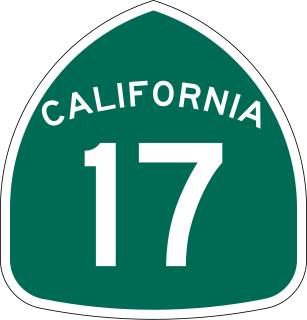
The Cypress Street Viaduct, often referred to as the Cypress Structure or the Cypress Freeway, was a 1.6-mile-long (2.5 km), raised two-deck, multi-lane freeway constructed of reinforced concrete that was originally part of the Nimitz Freeway in Oakland, California.

The San Francisco Fire Department (SFFD) provides firefighting, hazardous materials response services, technical rescue services and emergency medical response services to the City and County of San Francisco, California.
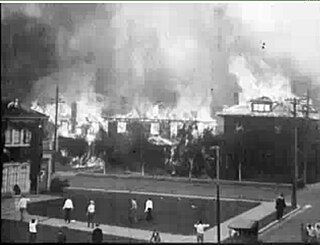
The 1923 Berkeley Fire was a conflagration that consumed some 640 structures, including 584 homes in the densely-built neighborhoods north of the campus of the University of California in Berkeley, California on September 17, 1923.

The history of Piedmont, California, covers the history of the area in California's San Francisco Bay Area that is now known as Piedmont, up to and beyond the legal establishment of a city.
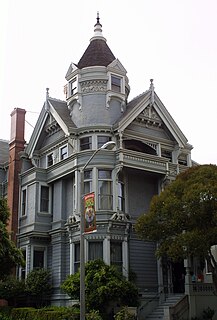
The Haas–Lilienthal House is a historic building located at 2007 Franklin Street in San Francisco, California, United States, within the Pacific Heights neighborhood. Built in 1886 for William and Bertha Haas, it survived the 1906 San Francisco earthquake and subsequent fire. The house is a San Francisco Designated Landmark and is listed on the U.S. National Register of Historic Places. It is the city's only intact Victorian era home that is open regularly as a museum, complete with period furniture and artifacts. As of 2016, it received over 6,500 visitors annually.

At 05:12 PST on Wednesday, April 18, 1906, the coast of Northern California was struck by a major earthquake with an estimated moment magnitude of 7.9 and a maximum Mercalli intensity of XI (Extreme). High-intensity shaking was felt from Eureka on the North Coast to the Salinas Valley, an agricultural region to the south of the San Francisco Bay Area. Devastating fires soon broke out in San Francisco and lasted for several days. More than 3,000 people died, and over 80% of the city was destroyed. The events are remembered as one of the worst and deadliest earthquakes in the history of the United States. The death toll remains the greatest loss of life from a natural disaster in California's history and high on the lists of American disasters.

Colcord Hotel is a luxury boutique hotel located in downtown Oklahoma City, in the U.S. state of Oklahoma. The building was finished in 1909 and has been considered Oklahoma City's first skyscraper. It is 145 feet (44 m) tall and has 14 floors.

The Auxiliary Water Supply System is a high pressure water supply network built for the city of San Francisco in response to the failure of the existing emergency water system during the 1906 earthquake. It was originally proposed by San Francisco Fire Department chief engineer Dennis T. Sullivan in 1903, with construction beginning in 1909 and finishing in 1913. The system is made up of a collection of water reservoirs, pump stations, cisterns, suction connections and fireboats. While the system can use both fresh or salt water, it is preferential to not use salt water, as it commonly causes galvanic corrosion in fire equipment.

Phoenix is a fireboat owned by State of California and operated by the city of San Francisco in the San Francisco Bay since 1955. Phoenix is known for helping to save Marina District buildings from further destruction by fire following the 1989 Loma Prieta earthquake. Her worthy assistance resulted in a second vintage fireboat obtained for the city. Both Guardian and Phoenix are based at Firehouse No. 35 at Pier 22½ of the Port of San Francisco. Phoenix often leads parades of ships, and takes part in welcoming ceremonies.
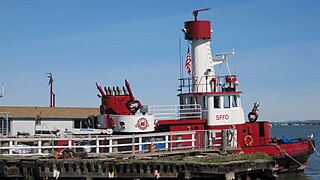
Guardian is a fireboat owned by San Francisco Fire Department and operated in the San Francisco Bay since 1990 in reserve status. Guardian was a gift to the people of San Francisco by anonymous donors following the notable role of the fireboat Phoenix in helping to save the Marina District buildings from further destruction by fire following the 1989 Loma Prieta earthquake. Both Guardian and Phoenix fireboats are based at Firehouse No. 35 at Pier 22½ of the Port of San Francisco. Guardian has 5 pumps which can deliver up to 26,000 gallons of water per minute, significantly more than Phoenix making it one of the most powerful water pumping fireboat in the world
As a major port a number of fireboats of San Francisco have been operated by the city of San Francisco since 1878.

The David Scannell was a steam-powered fireboat built for and operated by the San Francisco Fire Department. The city had no fireboats at the time of the disastrous 1906 San Francisco earthquake, so United States Navy fireboats had to travel there to help fight the extensive fires in the aftermath of the earthquake.

Nob Hill is a neighborhood of San Francisco, California that is known for its numerous luxury hotels and historic mansions. Nob Hill has historically served as a center of San Francisco's upper class. Nob Hill is among the highest-income neighborhoods in the United States, as well as one of the most desirable and expensive real estate markets in the country.
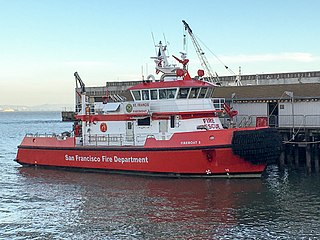
St. Francis is a fireboat operated by the San Francisco Fire Department on San Francisco Bay since 2016. Also known as Fireboat 3, she was given the official name on October 17, 2016, the anniversary of the 1989 Loma Prieta earthquake. Local schoolchildren helped pick the vessel's name.

















